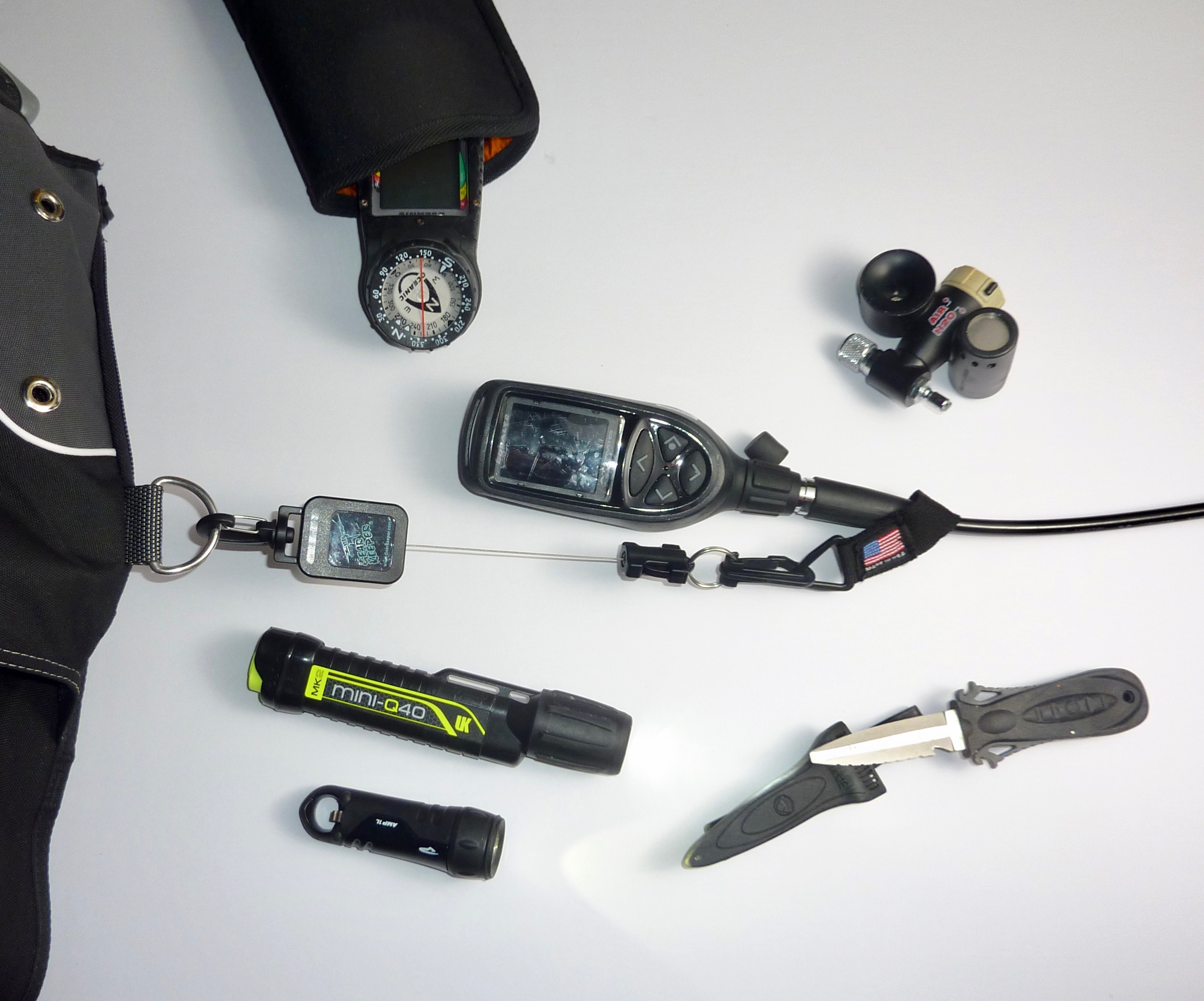I’ve seen more dives ruined by dive mask problems than any other piece of dive gear. Hey, if you can’t see, what’s the point? Furthermore, a leaky dive mask will lead to coughing, sputtering, and an overall sense of claustrophobia. You gotta have the right dive mask—and faces are as individual as fingerprints. Throw in moustaches, scars, etc., and you’ve got a mix that can be hard to overcome. The good news is masks are better than ever.
Here are the three most important points to consider in selecting a dive mask:
SEAL
A proper seal is by far the most important factor. Without it you’ll forever be fighting excess water inside your mask. A seal is a function of right where the mask skirt meets your face. The mask seal should have a double-feather edge in all areas, except perhaps under the nose.
To test for a good seal of a mask, relax your face and press the mask gently on your face, creating a slight vacuum. Do not suck in or hold the mask on. The mask should remain in place for at least several seconds without the strap in place. Now, do the same thing again but with your regulator in your mouth; this changes the shape of your face and, hence, is crucial to fit. You may even want to test mask with your regulator in your mouth and a hood on. A hood will also change the shape of your face.
Perhaps the hardest faces to seal a mask against are those with a moustache. I am asked all the time how I do it. You have three choices: first, trim your moustache down a bit to give the mask some bare skin to seal against; second, use a bit of Vaseline in your moustache to assist in the seal. This will, however, discolor the mask over time. And finally, find a mask that fits. They do exist. You’ll have to spend some time looking, but I have one that works with my hairy upper lip. I dive a TUSA Platina mask that fits firm against the bottom of my nose, yet has a large sealing surface underneath.
FIT
Fit and seal, while similar, are not the same thing. You can have a mask that seals well but fits horribly.
Not only does a mask need to seal out the water, it must be comfortable and functional. Undue pressure on the face, for example, will lead to headaches. A mask skirt must be soft but with just the right firmness—too firm and it hurts, too flimsy and the mask will collapse and flood at the most inopportune time.
Proper fit is no more apparent than in the nose pocket. If you are blessed with an exceptionally large nose, buy a mask that will accommodate your features or you may find yourself quite miserable by the third dive of the day.
VOLUME
Briefly, this is how much air space is trapped in the mask. But why is this so important? Simple—volume is almost always a function of just how close the lenses are to the eyes and this is the primary factor that affects your field of view (how wide you can see). Low volume masks are best.
There are many other features to consider in buying a dive mask— buckles, interchangeable lenses, even frame color, but unless you make the three listed above work, you may find yourself diving blind—literally.









